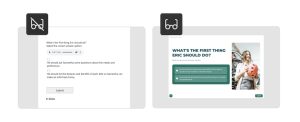
Imagine spending hours on a training course, only to realize you can’t fully access the content because of a visual, hearing, or cognitive barrier. Frustrating, right? That’s the reality for millions of learners around the world, and it’s a problem organizations can solve.
Creating accessible training content isn’t just about compliance or checking boxes; it’s about making learning work for everyone. When courses are designed to be inclusive, all employees are empowered to participate, understand, and succeed. The best part is that accessible learning benefits not only those with disabilities but also improves the experience for all learners.
In today’s digital-first world, where AI learning platforms and smart authoring tools are transforming online education, it’s easier than ever to design accessible eLearning content that meets everyone’s needs.
Why Accessibility Matters
According to the World Health Organization, more than 1 billion people worldwide experience some form of disability, and that includes your employees, learners, or clients. If training isn’t accessible, people with disabilities are at risk of being left behind.
And it’s not just the right thing to do; it makes good business sense. Companies that prioritize inclusive learning often see higher employee satisfaction and engagement and reduce the risk of compliance issues.
Key Principles of Accessible Training Content
Creating accessible eLearning is about designing while putting people first. Here are the principles that make training truly inclusive:
1. Text alternatives for non-text content
Not everyone experiences visuals in the same way. Images, charts, graphs, and even interactive elements require descriptive text—often referred to as alt text—so screen readers can communicate the information effectively. Think of it as telling a story for someone who can’t see the picture: “This graph shows a 40 percent increase in sales over six months,” instead of just leaving it blank. This way, no learner misses out on important details.
When choosing an authoring tool for creating online courses, make sure it includes everything you need to build accessible content. For example, iSpring Suite lets you design courses, quizzes, videos, interactions, and e-books that fully comply with Section 508 and WCAG 2.0 standards.
iSpring Suite is a powerful yet intuitive eLearning authoring tool that allows you to create online courses right in PowerPoint. You can craft training content from scratch in the tool or convert PowerPoint presentations to SCORM and other eLearning formats in just a few clicks.
With iSpring Suite, you can easily add alt text to any media object, allowing assistive technologies to read the content aloud, so those with disabilities can work on computers.
2. Keyboard navigation
Some learners are unable to use a mouse due to motor impairments or other reasons. A well-designed course allows full navigation using the keyboard alone. Every button, menu, and interactive element should be reachable using the Tab key and other shortcuts. It may seem like a minor issue, but it can completely change the learning experience for someone who relies on alternative input methods.
3. Color contrast and typography
Visual design isn’t just about looking good; it’s about being legible for everyone. High-contrast colors make text readable for learners with low vision, and clear, readable fonts help people who struggle with visual processing. Avoid small font sizes, overly decorative fonts, or color combinations that are difficult to distinguish. Accessibility in design is as much about comfort as it is about function.
4. Consistent layout and structure
A predictable, logical layout is a small but powerful accessibility tool. Learners with cognitive disabilities, or even those who are simply overwhelmed by busy screens, benefit when courses follow a clear, consistent structure. Headings, buttons, and interactive elements should appear where learners expect them to be. Consistency reduces confusion, helps learners focus, and makes navigation intuitive.
5. Captions, transcripts, and audio
Video and audio make learning more engaging, but they also can create barriers for some learners. People with hearing impairments may miss spoken content, while those with visual impairments or reading difficulties may struggle with text. Adding captions, transcripts, and audio options helps everyone access and understand course materials.
But captions and transcripts don’t just support accessibility; they also help learners in noisy environments or non-native speakers follow along more easily. Transcripts make video content searchable and simpler to review later.
With iSpring Suite, you can quickly add subtitles to your video narration and make your courses more inclusive.
You also can include audio in quiz questions and answer options, allowing learners to listen instead of read. This is especially useful for those with visual impairments or reading challenges such as dyslexia. iSpring Suite lets you upload prerecorded audio files or record new ones right within the tool.
6. Accessible interactive content
Accessibility doesn’t stop with videos or text. Interactive elements such as quizzes, simulations, and drag-and-drop exercises also need to be inclusive. Many tools require creating separate “accessible” versions of activities, which can be time-consuming and confusing to maintain.
With iSpring Suite, this process is effortless. The tool includes a special accessibility mode, so you don’t have to build duplicate versions of your quizzes. Just select an existing quiz and enable the option. When a learner activates accessibility mode, the quiz automatically switches to a simplified layout that’s fully compatible with most screen readers.
Conclusion
Creating accessible training content is a win-win situation: It fosters inclusion, enhances learning outcomes, and strengthens organizational reputation. Tools such as iSpring Suite make this process easier than ever. With features such as accessible mode, alt text, and captions, instructional designers can create courses that are both compliant and genuinely user-friendly.
Investing in accessibility is investing in your learners, your team, and your organization’s future. By prioritizing inclusivity, you ensure every employee can learn, grow, and succeed.





